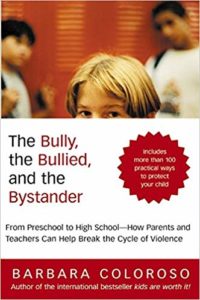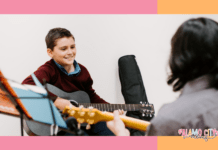
Ah, October. Pumpkins, cooler weather, and football season are in full swing. And by now, your child may have told you about a kid or two in class who might bully either your young one or someone else. How to deal with each child and situation can be frustration and limiting, depending on the policies of the school and district.
My children have dealt with these problem situations. Some were quickly addressed; some dragged on longer than they should have.
October is National Bullying Awareness Month, and I wanted to give you some resources for not only addressing the situation if your child being bullied, but also if your child is the bully or even the observer.
What is bullying?
Let’s start discuss what bullying is. Bullying is defined by Webster’s as “abuse and mistreatment of someone vulnerable by someone stronger, more powerful, etc.”
The CDC further explains that bullying is “unwanted aggressive behavior by another youth or group of youth, who are not siblings or dating partners, which involves a real or perceived power imbalance. The behavior is repeated, or has the potential to be repeated, over time.”
Example: It’s one thing for a child to tell yours they don’t like your kid’s shirt one day. It’s another for that same child to find yours every day and say his/her clothes suck.
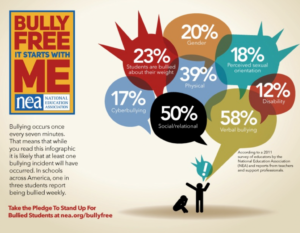 Sadly, bullying can take many different forms and be subtle or blatant. Forms of bullying include both in person (pushing, shoving, name calling) and/or cyberbullying (posting doctored photos, spreading rumors through social media). Girls are more likely to be cyberbullied whereas boys are more likely to be bullied through physical means.
Sadly, bullying can take many different forms and be subtle or blatant. Forms of bullying include both in person (pushing, shoving, name calling) and/or cyberbullying (posting doctored photos, spreading rumors through social media). Girls are more likely to be cyberbullied whereas boys are more likely to be bullied through physical means.
We’ve all seen it, and if we’re being honest, we may have even done it a time or two either to our siblings, friends, or classmates.
How to Handle Bullying
So, how do you deal with it? First, identify the situation. Is your child simply not getting along with another (because you can’t get along with everyone), or is your child the victim of a targeted attack? What are the rules and limits of the school district and the anti-bullying policies of your child’s school?
The most helpful thing you can do is talk to your child and keep an open line of communication. Kids need to know they have neutral territory and a safe place to vent. Don’t get me wrong: when my kids have come to me, telling me about their problems at school, the first thing I want to do is take care of the situation myself, but to have them trust me enough to tell me what’s going on, is huge. Once they’ve explained the situation, we sit down ahttps://outlook.office.com/owa/?realm=smhall.org&exsvurl=1&ll-cc=1033&modurl=0nd figure out how to address it.
Encourage your child to speak with teachers and administration when issues arise. The website StopBullying.gov explains, “Parents, school staff, and other adults in the community can help kids prevent bullying by talking about it, building a safe school environment, and creating a community-wide bullying prevention strategy.”
If you’re not getting help from the direct lines of contact (teachers, school administrators), go higher up until you do find someone to help you address the problem. Advocate for your child and teach him/her the process as well so he/she can advocate for himself/herself some day.
In addition, there are some incredible resources out there for parents to use to help their child, no matter if he/she is the bully, the bullied, or the onlooker. Books are a great way to not only gain more insight and information on bullying, but to offer a completely different perspective on how to address it.
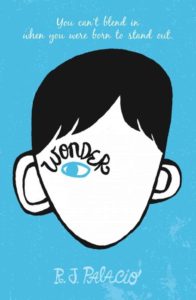
Wonder, the best-selling and heart-warming book, became an incredible movie.
The story centers on Auggie Pullman, a fifth grader who’s attending school for the very first time after being home schooled due to a medical condition.
The tagline—”You can’t fit in when you were born to stand out”—beautifully explains Auggie’s life and his struggle (and success) to find true friends.
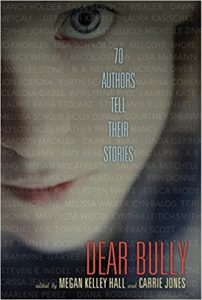 Dear Bully is an anthology of 70 authors’ stories of dealing with bullying at school and within their communities. Shorts from R.L. Stine (Goosebumps) and Mo Willems (Elephant and Piggie series) are just two of the many writers who give encouraging words and share their stories of frustration and triumph.
Dear Bully is an anthology of 70 authors’ stories of dealing with bullying at school and within their communities. Shorts from R.L. Stine (Goosebumps) and Mo Willems (Elephant and Piggie series) are just two of the many writers who give encouraging words and share their stories of frustration and triumph.
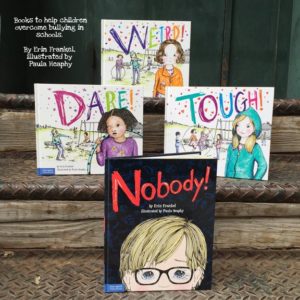
Erin Frankel’s books helped my daughter when she dealt with frustrating situations at school. Erin’s books not only address the point of view of the bullied but of the observer and the bully herself.
The book is geared to those in grades 2–4, presenting the problem, fallout, and solution. She shows that sometimes things aren’t always what they seem and that when we empower ourselves to see outside our own points of view, we may find a solution is easier than we think.
 Stand in my Shoes and Llama Llama and the Bully Goat are two books for younger children, but they hit home.
Stand in my Shoes and Llama Llama and the Bully Goat are two books for younger children, but they hit home.
Understanding how to talk to and address those who aren’t respecting your boundaries is important and a great first step in empowering your child.
These books also teach children how to reach out to others who truly may not have a concept of what it takes to be a good friend. 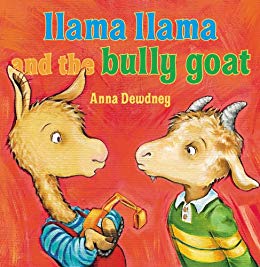
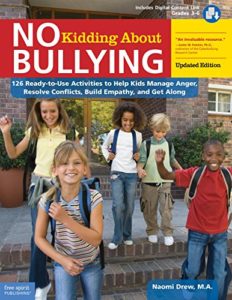 No Kidding About Bullying gives children in elementary and early middle school activities (grades 3–6) to use in situations of bullying.
No Kidding About Bullying gives children in elementary and early middle school activities (grades 3–6) to use in situations of bullying.
This revised edition has more than 100 lessons that can be “completed in 20 minutes or less and include games, role-plays, group discussions, art projects, and language arts exercises that build respect, empathy, and kindness. Digital content includes student handouts from the book and bonus materials.”
This can be used in conjunction with other actives and school- or community-wide events regarding bullying.
Stand Up for Yourself and Your Friends has been a staple in our house for years. Although it is an American Girl® book, it has useful information for both girls and boys. The book offers quizzes for readers to learn their “speak-up” style, stories from those who’ve been through bullying situations and how they handled it, and smart ways to stand up for yourself and your friends.
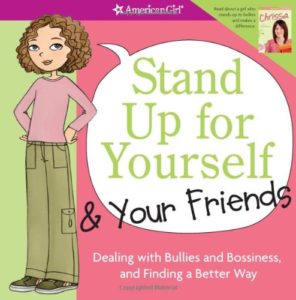
The Bully, the Bullied, and the Bystander covers a HUGE amount of information including the different types of bullying, what to do if your child is the bully, and how to help your child not become the target of bullying, as well as how to decipher the anti-bullying policies of the school and the school district.
Updated to include the affects of cyberbullying and tools to help break the cycle of violence.